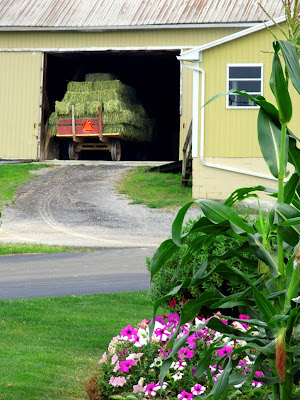Raspberry Ruffles
“She can pick what she likes. She’s welcome to it. I prefer the cultured
varieties. No chance of poison ivy, thorn pricks - snake, spider, tick,
or bee bites.”
He corrected her. “The picker is a him.”
“Really? Interesting. Perhaps he’s picking for a wife or mother. A
real gentleman. Or . . . he
likes berries as much as you do.” Connected to her smile was an eyebrow
slightly raised. It was the eye on him. The other was on unpacking the
bags.
Leaving that last remark alone the Man-of-the-House announced, “These
are from the farm stand by-the-way. The zucchini looks good.”
“It does. So does the butternut squash. Nice and fresh. Thank you.”
Then, reaching into the last bag, she exclaimed, “Ooo, raspberries,” in slow
melodious tones.
“Yeah” was the solitary note. But a knowing glance was exchanged. A
hankering for raspberries is something they share in common, although, one
doesn’t often put a hankering into words – at least not out-loud.
Raspberry Jam
Childhood memories are embedded in the taste buds of the
Lady-of-the-House. Mom fixed peanut butter and jelly sandwiches routinely with
grape. Raspberry was a once-a-year experience. On vacation at the seashore Dad
drove out to an ordinary-looking-enough-house, a location mysteriously revealed
to him by word-of-mouth, and brought home freshly made doughnuts – for one of the family’s breakfasts. The young girl can still
see the grease spot on the brown bag Dad held in his grasp. Other than that
gala event they never ate doughnuts.
Overhearing grown-up gossip in the kitchen, she learned that the white powdered
doughnuts were made by a beach-tanned baker who let his reputation go to his
head but never his surfer’s waistline. He was generous with his filling of
either rich custard (that Mom could testify he was boast-worthy of) or
raspberry jam. The Lady-of-the-House has vivid memories of choosing the jam.
She wandered out the screen-door and ate the summer holiday confection in
private, in little bites, making it last as long as she could – a feat of
accomplishment for any growing girl.
Raspberry Cake
For the hankering of the Man-of-the-House his Lady made a cake. A warm
summer memory of raspberry doughnuts hovered over her as she buttered and
floured, mixed and measured. She spread fresh raspberries over two thirds of
the batter in the pan, then spooned the remaining batter over the top to almost cover the raspberries. The cake came out but went
back in the oven to bake several minutes longer because of its added moistness.
It didn’t rise as well as she would have liked but the flavor of that
mysterious baker’s jam-filled doughnut was captured.
The Man-of-the-House and his lady could not go away this year but
they have learned to stop and take brief vacation-interludes at home. Enjoying
the pleasant breezes of a remarkably mild summer they vacationed in a chair,
each with a slice of raspberry cake served on pretty china.
Raspberry Ruffles
Knitting Lingo
While the Man-of-the-House puttered around in his own way, the
Lady-of-the-House picked up her knitting needles - also a kind of brief
vacation. A small project in the Fall 2011 issue of Love of Knitting magazine
aroused the cuteness-factor in her and launched an attempt at something new –
ruffles - in this case Raspberry Ruffles.
The size 2 bloomers-with-back-interest is knit flat, top-down,
front-to-back.
Gold yarn is shown on the magazine page but she used up remnants in her stash – which is what a small project is good for.
Gold yarn is shown on the magazine page but she used up remnants in her stash – which is what a small project is good for.
The crowded stitches inside the
ruffle can be picked-up easily with a crochet hook, sliding the accumulated
stitches off the straight end of the hook and onto a knitting needle. Here you
can see the loops of the purl rows ready to be picked up for the ruffle.
The ribbing at the leg has some yarn-overs for a lacy look. Elastic is in the waistband.
The ribbing at the leg has some yarn-overs for a lacy look. Elastic is in the waistband.
Into Grandmother’s Someday Box it goes . . . or until an invitation to
the next baby shower.
It is okay to look back at the good memories. The faithful also look
forward. The American poet John Greenleaf Whittier puts this well:
“I dimly guess, from blessings known, of greater out of
sight.”
Hope you are enjoying the last weeks of warm summer breezes.
Karen Andreola



















.JPG)







